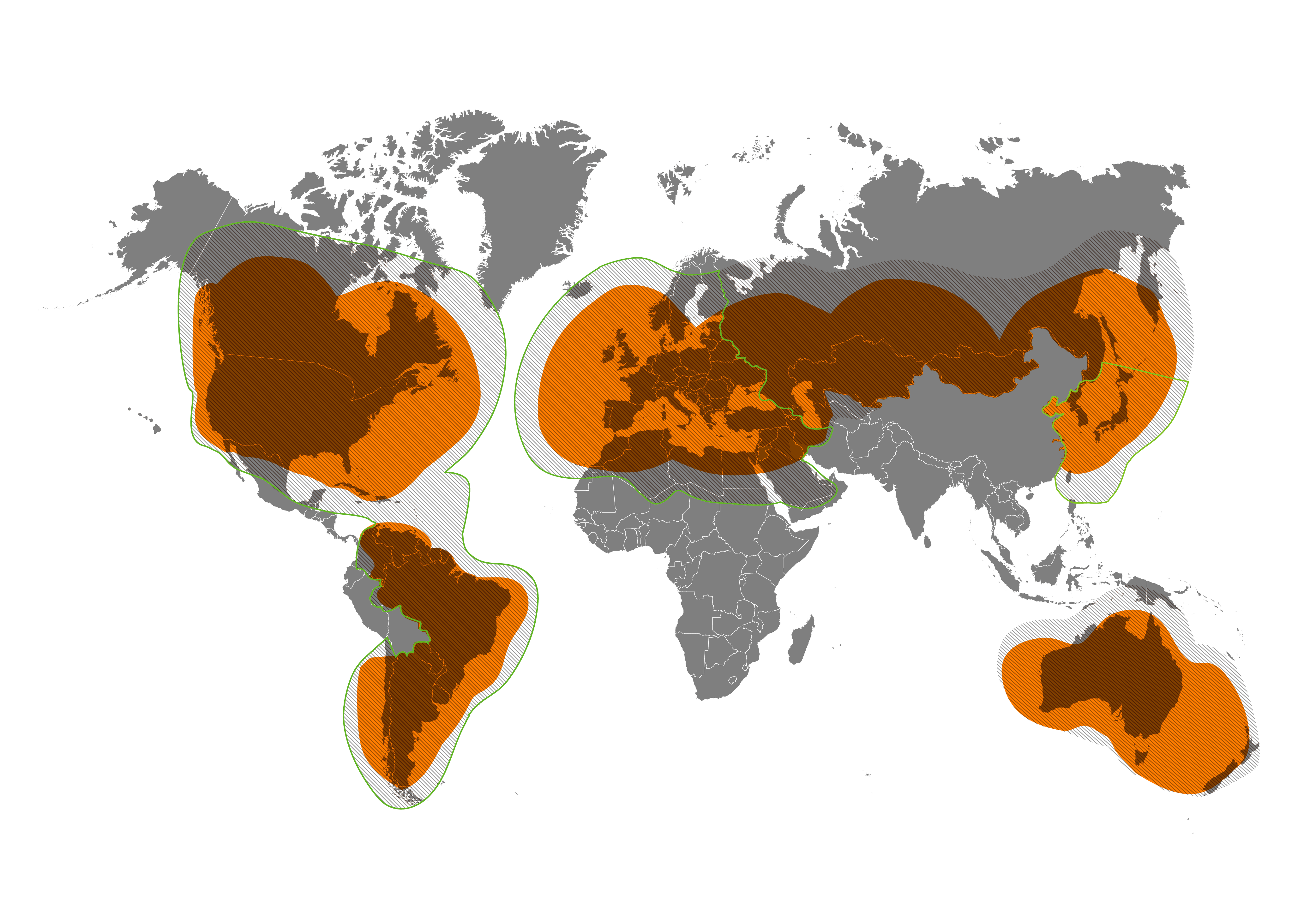
With the impending launch of the iPhone 13 likely later this month, the rumor assembly line had been pumping out a steady clip of factory photos and analyst speculation. Largely, rumors point to a device that's not too dissimilar from the iPhone 12 in terms of design and specifications — that is until a recent rumor emerged that the iPhone 13 would feature satellite communication.
The MacRumors story on a report from top Apple analyst Ming-Chi Kuo, further backed up by a Bloomberg report, caught Apple observers flat-footed. Most of us are accustomed to the standard suite of rumored camera and display upgrades. But LEO (low-Earth orbit) satellite communication is largely meant for off-the-grid dwellers, scientists, survivalists and journalists exploring remote parts of the world. Why would Apple, of all companies, be trying to compete in a space crowded by $800 feature phones with giant antennas?
- These are the 7 biggest iPhone 13 rumors we expect
- iPhone 13 vs iPhone 13 Pro: Biggest differences to expect
- Plus: Apple Event 2021 rumored dates and all the new products to expect
According to Bloomberg, the iPhone 13's satellite capabilities are only meant for emergency calls and texts when a cell signal is not available. It's not clear exactly how this would work with carriers or other satellite companies, or if there would be an added associated cost. But the option could be handy. And whenever Apple does something, like removing the charger from the box, other phone makers tend to follow.
It should be noted that the feature might not actually be activated until next year. Per Bloomberg's Mark Gurman, while the hardware will be baked into the iPhone 13, the feature will need to be activated by a future software update, likely in 2022. The feature could also be dropped entirely.
Either way, here's everything we know about the iPhone 13's supposed satellite communication capabilities.
iPhone 13 satellite overview

Before we get into the iPhone 13 potentially having satellite communication, let's break down what satellite phones are.
Unlike the cell phones most of us tote around, satphones connect via orbiting satellites. This gives satphones distinct advantages over cellphones. Satphones can essentially connect from anywhere on Earth and are not reliant on cell towers. This can be handy not only when traversing the Gobi Desert, but during natural disasters that may knock out cell towers.
Get instant access to breaking news, the hottest reviews, great deals and helpful tips.
Unlike cellphones, satphones are tied to a specific satellite company. The big ones are Iridium, Inmarsat and Globalstar. Each company has varying levels of coverage, depending on the number of satellites orbiting in its "constellations." For example, Iridium has 75 satellites at 780 km above Earth orbiting the globe, giving coverage to even the North Pole. Globalstar, has 48 satellites at 1,414km above Earth, meaning speeds will be slower than Iridium due to the longer distance. Globalstar's coverage isn't fully global either, but hits much of North and South America, Europe and northern Asia, Russia an Australia.
Inmarsat has a completely different satellite system than Iridium and Globalstar. With only 13 satellites, Inmarsat has the fewest of the three. But the satellites orbit at 35,405km above Earth, giving each satellite a greater view of the planet. The satellites are also in geosynchronous orbit (GEO), meaning that the satellites follows the rotation of the Earth. Once someone locks in with an Inmarsat satellite, they're unlikely to lose their connection. But if there's a major obstruction, the Inmarsat satphone won't be able to as easily connect to another satellite, requiring the user to move to a location with a clearer line of sight.
Given that the iPhone 13 does not have a giant antennae sticking out the top, the quality of any satellite coverage remains to be seen. But common sense dictates that it wouldn't be as good as a dedicated satellite phone.
iPhone 13 Satellite coverage

According to analyst Ming-Chi Kuo, Apple will reportedly use Globalstar's satellite constellation. So it will be able to make emergency calls and texts from much of the world, inclduing North and South America, Europe, northern Asia, the Koreas, Japan, parts of Russia and all of Australia. Unfortunately most of Africa, South and Southeast Asia and much of the northern hemispheres will have weak to no coverage.

iPhone 13 satellite specs

The iPhone 13 will apparently use a modified Qualcomm X60 baseband chip. The quality of coverage is unknown at this time.
Call quality and coverage might also be hindered by the iPhone's lack of external antennae, although you could see companies making accessories to help boost signal.
Satellite data speeds tend to be incredibly slow, so don't expect to watch Netflix in remote China. Actually, speeds are so slow that loading up a simple Word document might not be feasible. On the Globalstar GSP-1700 satellite phone, it offers speeds of 9.6 kbps. That's slower than dial-up.
iPhone 13 satellite cost

Satellite phone plans are not cheap. The cheapest plans can run at $35 a month, but only with 15 minutes of talk time in North America. Global plans can start at $52.95 a month, with only 10 minutes of talk time, with each additional minute costing a $1.29 more. There are also emergency plans that don't include minutes and only charge based on minutes used. But to keep the plan active, it may cost a few hundred dollars a year.
Some cell phone carriers automatically block phones from being able to call satellite phones unless the customer requests the block be removed. Calling a satellite phone is considered an international call, costing a few dollars per minute.
How cell carriers will integrate iPhone 13's satellite system remains to be seen. It's not sure if all plans will include emergency satellite calls and texts, or if it would be something requiring an add-on. It's also unknown if all iPhone 13 models, or only the more premium editions, will include satellite calling.
iPhone 13 satellite outlook

The potential inclusion of satellite connectivity in the iPhone 13 could effectively shift all phone development. According to Kuo, Apple is banking on LEO satellite connectivity as the future to help "provide innovative experiences." It's not sure what Kuo meant by this, but reports suggest that Apple has been tinkering away at mixed reality headsets, an Apple car and other IoT (internet of things) devices.
In 2019, Bloomberg's Mark Gurman reported that Apple had hired a "top secret team" of software, hardware and aerospace engineers to innovate on satellite data transfer, with results being expected in five years. The status of what that team developed remains unknown. Granted, a company as large and cash-rich as Apple can easily hire engineers to noodle away at far-flung concepts with little chance of coming to market.
And remember, according to Gurman's source, Apple may not even allow satellite connectivity to occur until next year or could drop the plan entirely.
There's a chance that Apple is looking at Starlink, Elon Musk's satellite internet company, that plans to launch thousands of small LEO satellites to provide high speed internet to anyone around the world. Already, users in remote parts of America, Britain and Canada report that the experience has been lifechanging.
If Apple does introduce satellite coverage with the iPhone 13, at the very least it will push other phone manufacturers into adding remote safety features as well. And if even one person lost in the woods is saved thanks to their iPhone 13's satellite connectivity, it would have been well worth the effort by Apple.

Imad is currently Senior Google and Internet Culture reporter for CNET, but until recently was News Editor at Tom's Guide. Hailing from Texas, Imad started his journalism career in 2013 and has amassed bylines with the New York Times, the Washington Post, ESPN, Wired and Men's Health Magazine, among others. Outside of work, you can find him sitting blankly in front of a Word document trying desperately to write the first pages of a new book.
